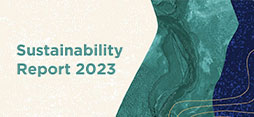6 July 2017
Independent Report Backs Modern Coal Generation for Australia

INDEPENDENT REPORT BACKS MODERN COAL GENERATION FOR AUSTRALIA Statement from Greg Evans – Chief Executive COAL21 Fund & Executive Director – Coal, MCA
The COAL21 Fund* and the Minerals Council of Australia have today released a detailed examination of the viability of high efficiency low emission (HELE) coal generation and its potential contribution to Australia’s energy mix.
In the most detailed report of its type, comprising 550 pages, energy sector specialists from Solstice Development Services and power sector engineers GHD have examined the cost of building new HELE plants in Australia and the implications for wholesale electricity charges.
The report considers this against the backdrop of coal plant closures expected over the next two decades due to ageing assets while recognising the need to ensure the most affordable and reliable technology is adopted as a replacement.
Importantly the report authors reviewed and costed different technology options that are capable of replacing retiring capacity. These were considered on their merit using a range of sources cross checked against published studies and their respective assumptions.
Key findings include:
- GHD estimate a current construction cost of $2.2million/MW (or $2.2 billion for 1000 MW capacity) for a modern HELE or ultra super critical (USC) black coal plant based on savings accrued from utilising a brownfield site and sourcing specialised equipment from Asia.
This demonstrates that HELE coal plants – which would have operating lives of several decades – are viable and affordable options for replacing Australia’s existing ageing coal fired power stations.
The study also reviewed wholesale electricity costs for different technologies expressed on a long run marginal cost (LRMC) basis, using a consistent methodology to allow comparison. Based on provision of a 650 MW stand-alone power station capable of producing at least 2 to 3 days of electricity independent of the weather, the study found:
- USC black coal is the lowest cost generation option at $40-$78 per MWh in (2017 prices) on a
LRMC basis.
- Other synchronous generation had higher wholesale costs, including combined cycle gas at $69-
$115 per MWh and open cycle gas at $179-$430 per MWh.
- Variable renewable energy (VRE), which is not available 24 hours a day, also has higher costs, including solar at $90-$171 per MWh and wind at $64-$115 per MWh. At assumed average capacity factors of 20 per cent and 37 per cent respectively for solar and wind, these technologies are not only more expensive but unsuitable without ‘firming’ or back up generation to emulate baseload performance.
- An option to firm VRE includes combining wind or solar PV generation with batteries:
- In the case of wind and batteries, and to allow for the equivalent to baseload generation available for 24 hours per day over a 2 to 3 day period, its LRMC rises to $211-$693 per MWh. This is more than 8 times the cost of high range USC black coal.
- The high range battery cost estimate implies a capital cost of almost $27 billion for a 650 MW equivalent plant capable of delivering dispatchable power for three days.
- By contrast, the cost of wind generation firmed with USC black coal to provide constant supply is a LRMC of $75-$121 per MWh.
- The report also identifies the longer term opportunity for viable Carbon Capture and Storage (CCS) options. USC black coal with CCS is costed at $69-$165 per MWh and wind with USC black coal and CCS would cost $88-$196 per MWh.
The report confirms that USC coal generation can deliver on the priorities of affordability, reliability and low emissions. It notes electricity prices paid by manufacturers have doubled in the past decade and that USC coal is able to lower the cost of generation across the National Electricity Market (NEM) given current wholesale electricity prices.
It concludes that the imminent retirement of coal plants in NSW and Victoria provides opportunities for constructing and replacing them with USC plants by the early 2020s. Additional capacity may also be required in Queensland in the medium term under a higher economic growth assumption.
The report also points out that VRE sources cannot deliver system strength, inertia, and voltage control essential for a stable grid. This means VRE integration would only be possible when accompanied by fast- reacting, mid-merit, fossil-based technologies such as HELE which provide readily available back up capacity to hedge against the variability and lack of strength of VRE generation.
Reducing greenhouse gas emissions is important and replacing the existing coal fleet with HELE technology would save 44.2 million tonnes of CO2 or over 25 per cent of National Electricity Market coal generation emissions. At an individual power station level, with the future adoption of CCS, emissions intensity of USC plants would fall from 0.773 to 0.106 tonnes CO2/MWh.
Coal fired generation is the cheapest and most reliable electricity source in Australia available 24 hours a day, every day. Australia has access to the highest quality coal in our own backyard and the rest of the world pays a premium to use it. There is little sense in not utilising coal for our own electricity generation when HELE technologies are affordable and reliable and will help reduce emissions.
This report confirms that USC coal plants should continue to figure prominently in our electricity system, complementing and supporting other technologies including renewables.
There will be changes in Australia’s existing energy generation over coming decades to replace ageing generation. As we modernise our system we must ensure grid stability and keep energy costs as affordable as possible. If we fail to do so, there will be serious economy-wide impacts, such as lower growth, falling productivity and lower living standards.
This new report is a comprehensive study of the costs of these technologies in Australia and will help inform decision making by government, regulators and investors and provide useful information to important stakeholders such as energy users. It should form an important input into the Prime Minister’s request to the Australian Energy Market Operator to review the reliability of the NEM and examine how to secure investment in new continuous dispatchable power.
* The COAL21 Fund was established in 2006 and is owned by Australian coal producers. To date it has invested $300 million in low emission coal technologies.
Categories:
Industry news Whitehaven coal
Whitehaven coal

